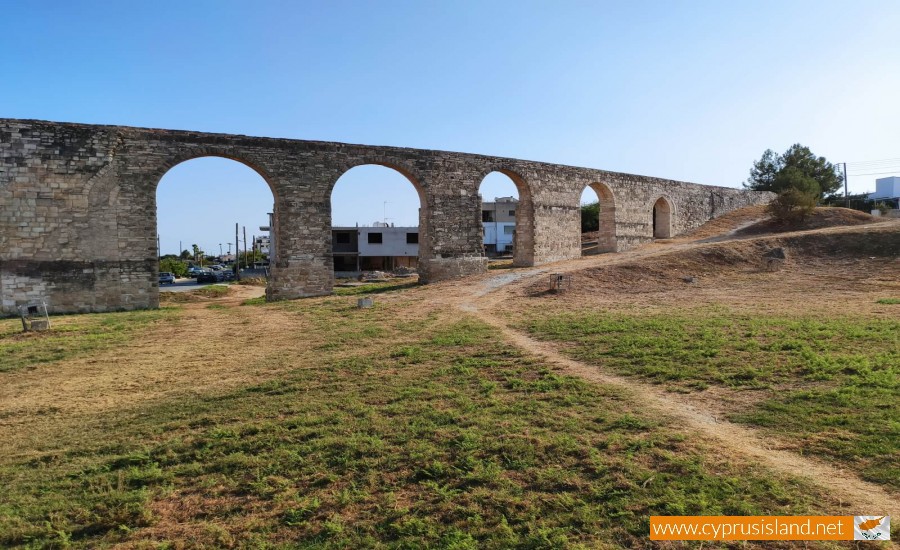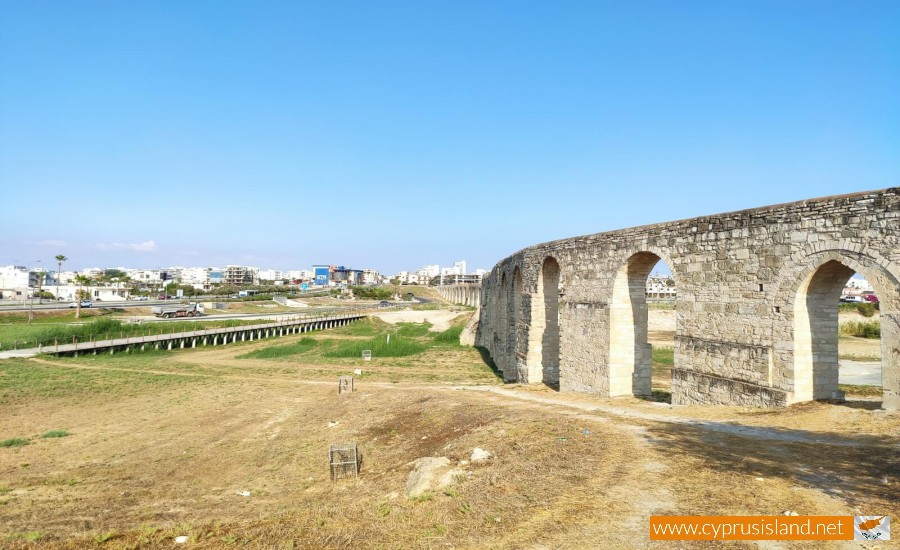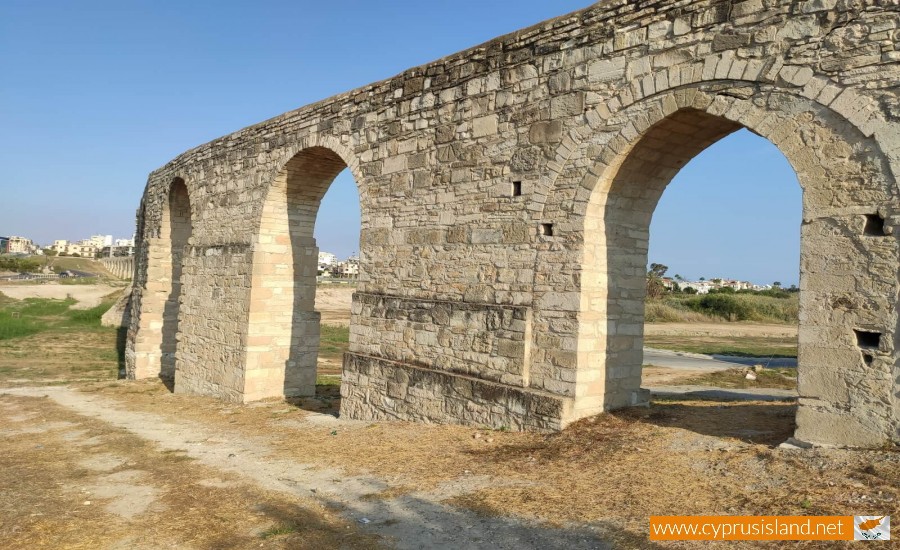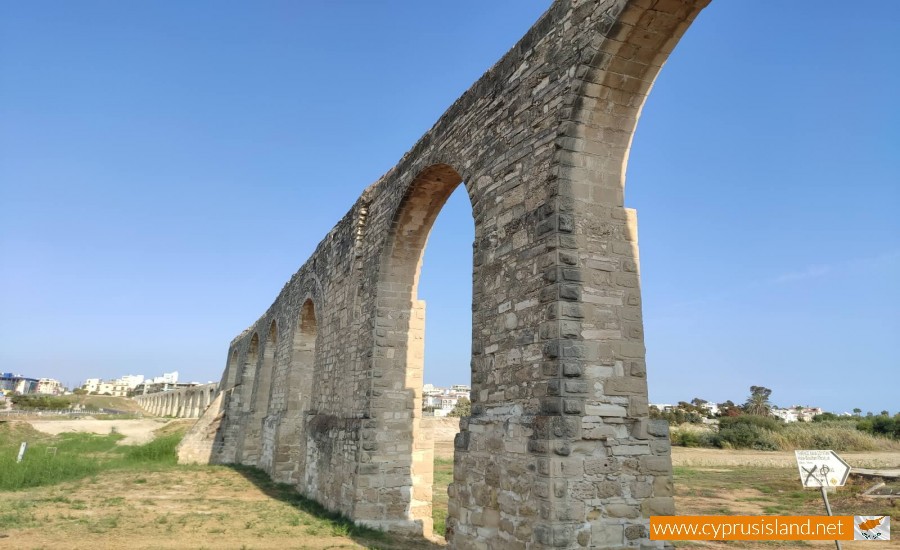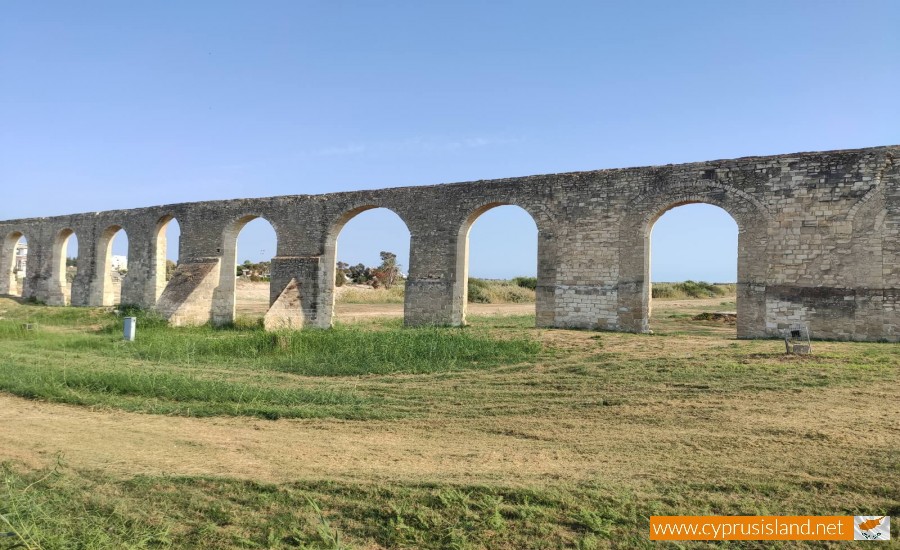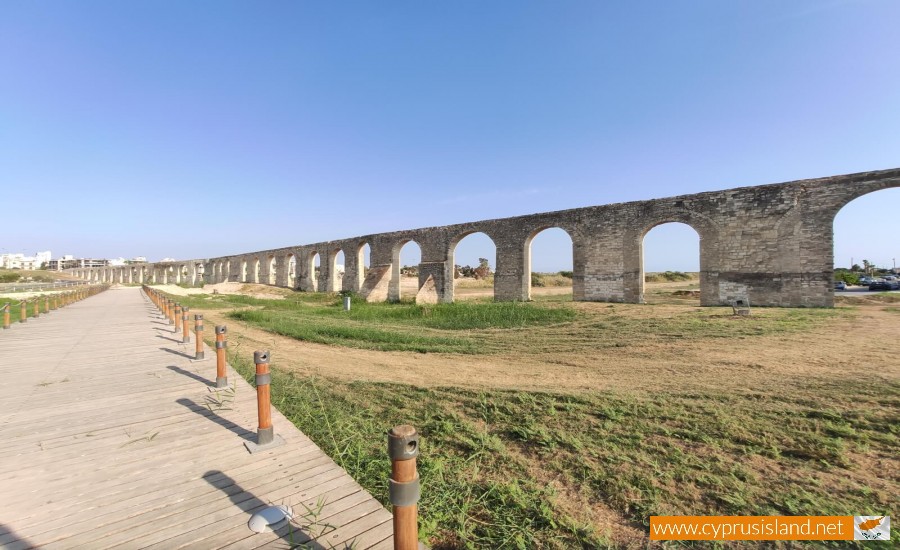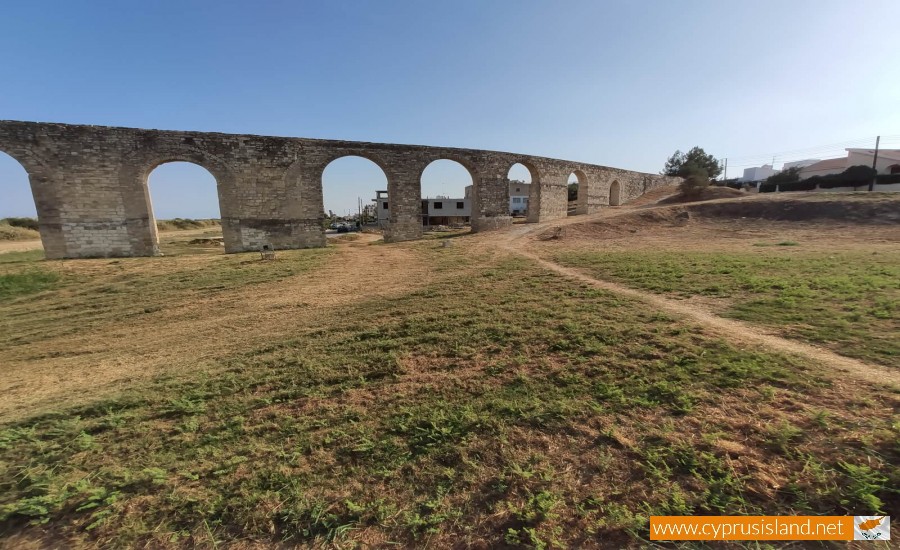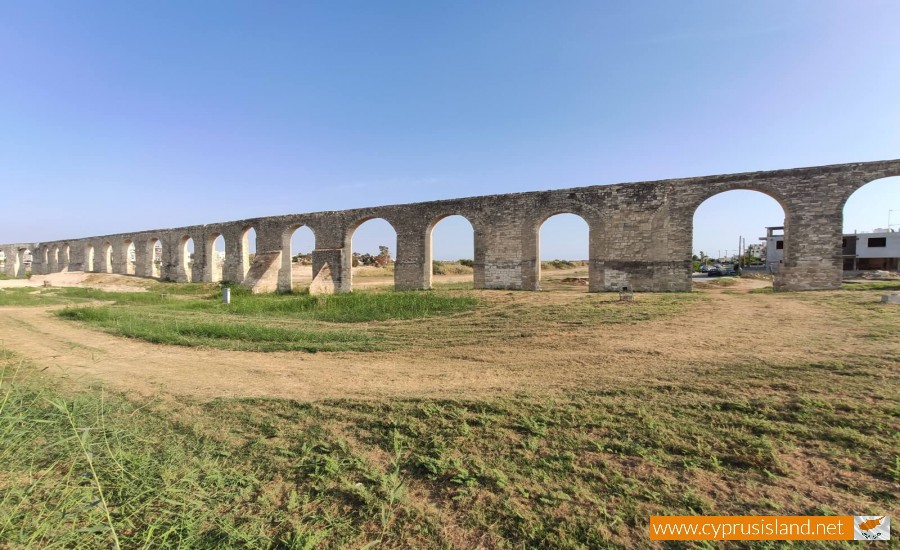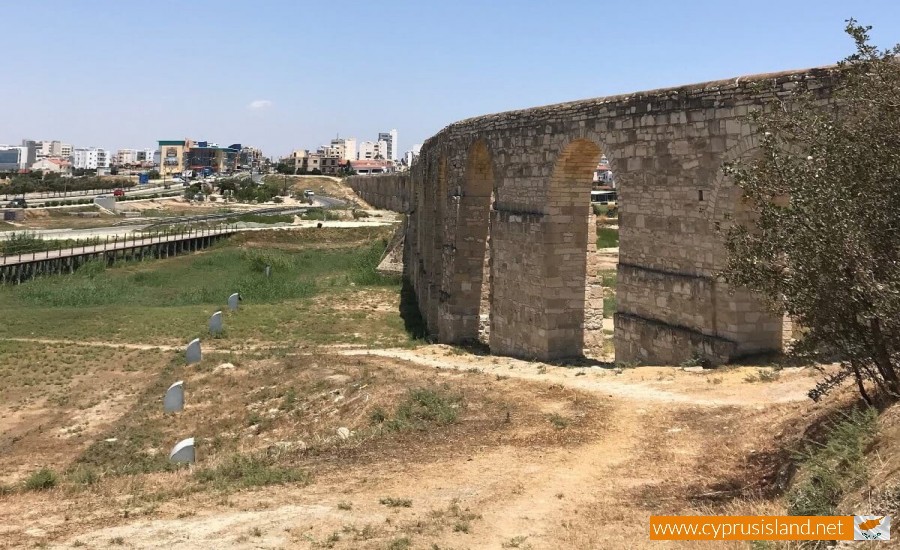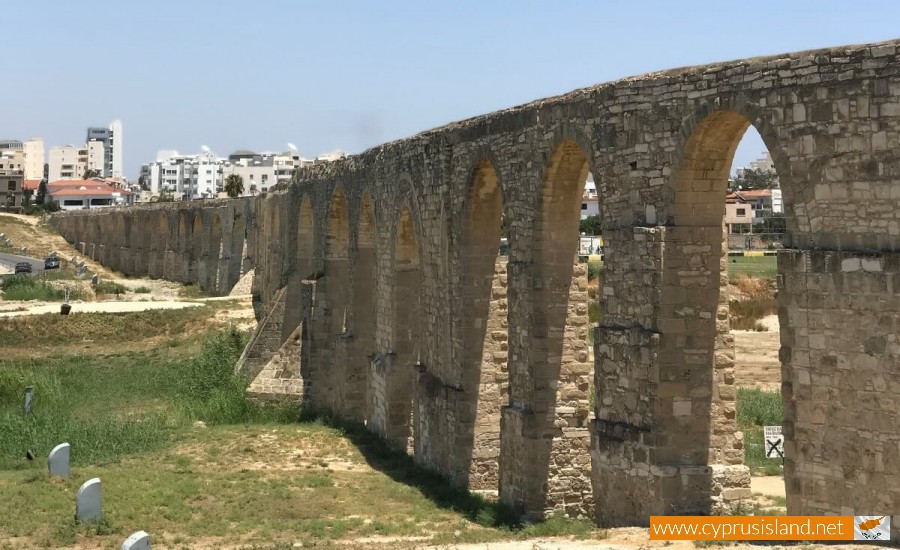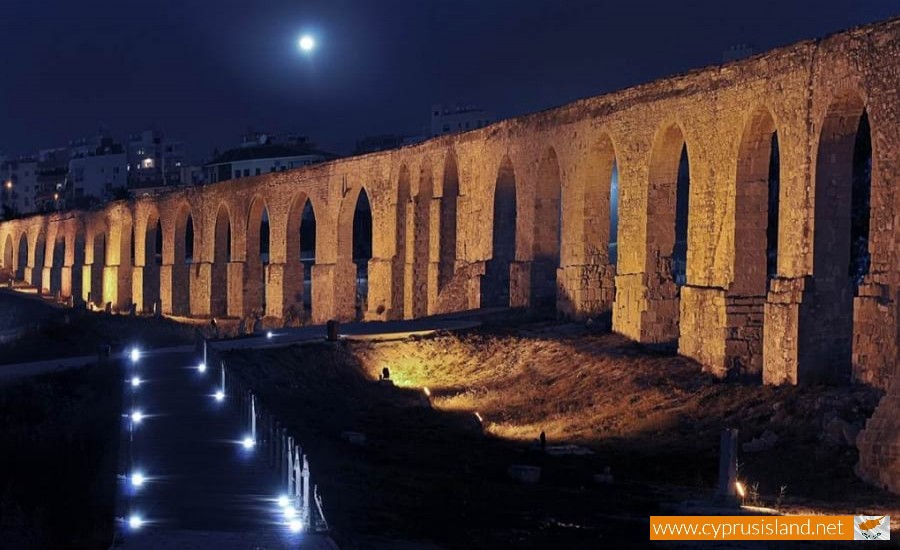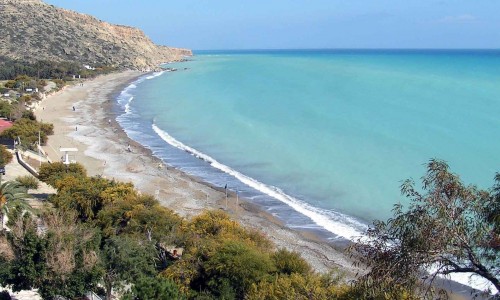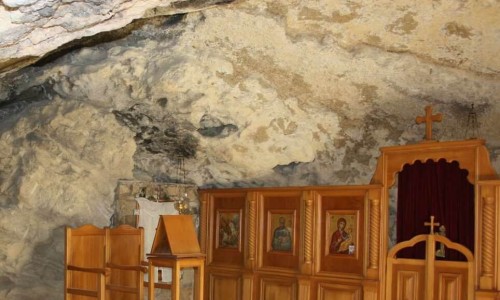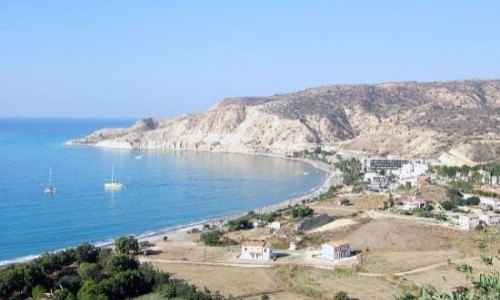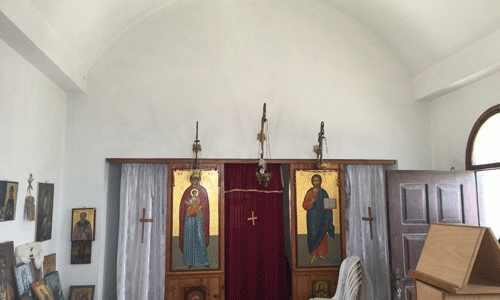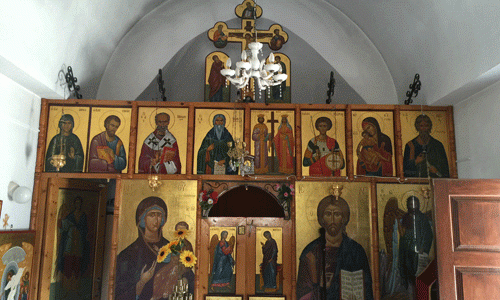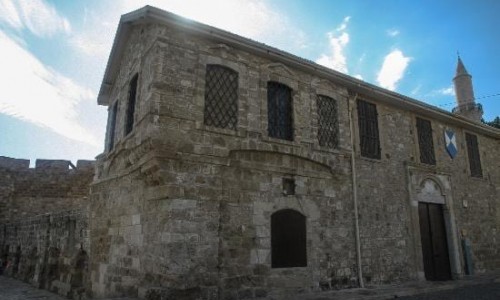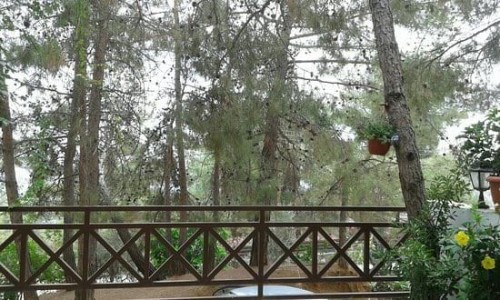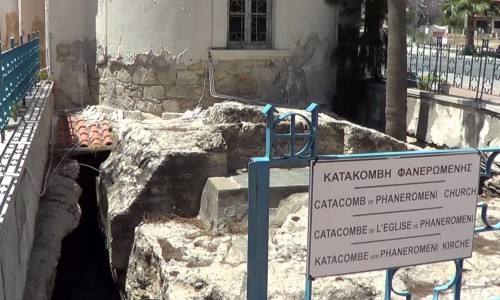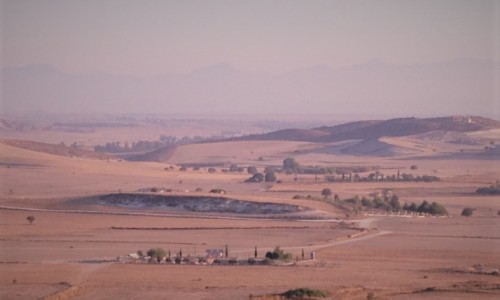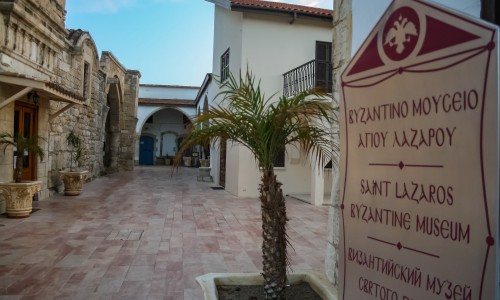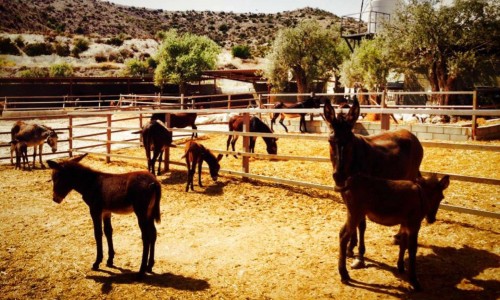Kamares Aqueduct, Larnaca
Perched along the old Limassol–Larnaca road just outside Larnaca, the Kamares Aqueduct, also known as the Bekir Pasha Aqueduct, is a striking 18th-century marvel Engineered in Ottoman style but inspired by Roman techniques, this aqueduct’s graceful arches—kamares in Greek—transport water across fields today as a testament to historical ingenuity.
Origins & Construction
- Commissioned by: Ebubekir (Bekir) Pasha, Ottoman Governor of Larnaca, self-financed as a public project
- Construction Timeline: Began in 1746/47 and completed around 1750, at a cost of approximately 50,000 qirsh.
- Water Source: Drew from springs and the Tremithos (Arpera) River roughly 6–15 km away, channeling nearly 4,500 m³ / day—roughly 360 litres per person—to Larnaca’s homes, fountains, and baths
- Architecture: Extended about 16 km in total, combining underground channels, 250 ventilation shafts, and several overland bridges. A primary stretch of 75 arches still stands today.
For nearly two centuries, from circa 1750 until 1939, this aqueduct diligently supplied Larnaca. Successive repairs—especially in 1856 and the late 1800s—ensured its endurance
It was gradually phased out as modern plumbing took over, and by 1939–41, pipes fully replaced its role .
Visiting Today: What to See & Do
- Walking & Photography: A cobbled footpath and benches run along the arches. Each arch frames the golden light beautifully at sunrise, midday, or sunset .
- Night Illumination: Over twenty arches are tastefully lit after dusk, creating a serene and romantic evening ambiance.
- Engage & Explore: The site allows for gentle exploration—not just of the arches, but also of nearby mill ruins, wells, and the salt lake walking trails.
- Surrounding Trails: Links with the Salt Lake and Hala Sultan Tekke via scenic loops ideal for walking or cycling
Why the Aqueduct Matters
- Engineering Legacy: Often regarded as the most prominent Ottoman-era water supply structure on Cyprus.
- Architectural Marvel: Roman‑style arches of soothing proportion highlight the fusion of Ottoman design and ancient engineering .
- Urban Icon: It marks Larnaca’s western edge—part of a historic ensemble that includes its famed salt lake and the city’s ancient roots
Best Time to Visit & Tips
- Timing: Late afternoon to early evening offers dramatic shadows and cooler temperatures—midday is hot and luminous.
- Getting There: Easy by car or bike—there’s informal parking along the highway; access points are walkable.
- Facilities: Minimal—bring water, snacks, and sun protection. Benches and footpaths provide comfort.
- Suggested Gear: Camera or smartphone, walking shoes, light jacket for evenings.
Legacy & Cultural Importance
Bekir Pasha's aqueduct stands as more than a water channel—it symbolizes a moment when public health, civic pride, and empire infrastructure met. Alexander Drummond, an 18th-century chronicler, marveled at the project as a “noble design… worthy of a great and good man” . Today, it remains a proud emblem of Larnaca’s heritage and a living memorial of urban philanthropy.
Whether you’re tracing its length by foot, capturing golden-hour photos, or simply soaking in centuries-old architecture, the Kamares Aqueduct is a living link between Larnaca’s past and present. Once the lifeline that quenched a growing port city, now an open-air gallery of arches, it continues to flow—only now with stories instead of water.


